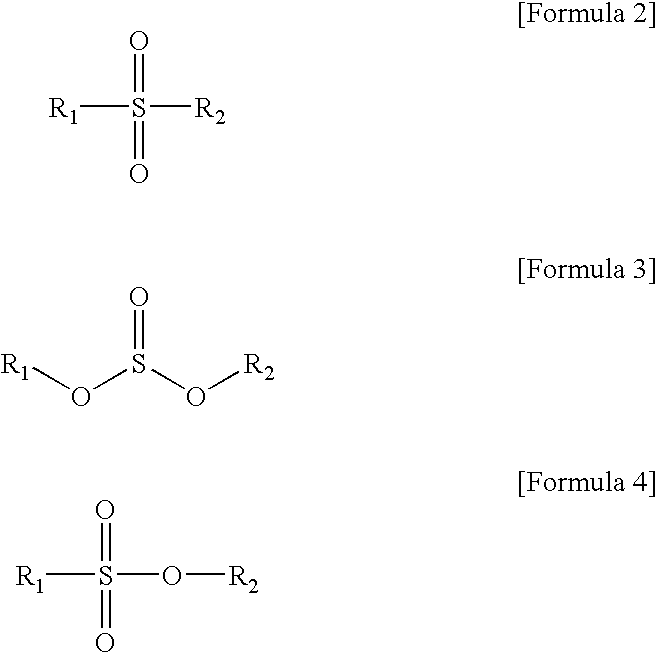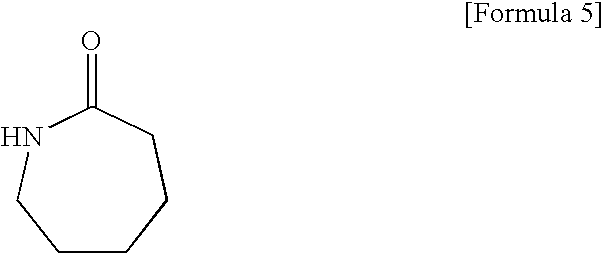Non-aqueous electrolyte and secondary battery using the same
a secondary battery and electrolyte technology, applied in the direction of non-aqueous electrolyte cells, cell components, electrochemical generators, etc., can solve the problems of battery life characteristics dropping, sei film not being sufficient to serve as a lasting protective film for the anode, and battery stability degradation
- Summary
- Abstract
- Description
- Claims
- Application Information
AI Technical Summary
Benefits of technology
Problems solved by technology
Method used
Image
Examples
example 1
[0038]To 100 parts by weight of a solution containing 1M LiPF6 in ethylene carbonate (EC) and diethyl carbonate (DEC) mixed in a weight ratio of 1:1, 1.0 parts by weight of ε-caprolactam (Formula 5) and 3.0 parts by weight of 1,3-propane sultone were added to provide an electrolyte.
example 2
[0039]An electrolyte was provided in the same manner as described in Example 1, except that ethylene sulfite was used instead of 1,3-propane sultone.
example 3
[0040]An electrolyte was provided in the same manner as described in Example 1, except that N-acetyl caprolactam (Formula 6) was used instead of ε-caprolactam.
PUM
| Property | Measurement | Unit |
|---|---|---|
| reduction potentials | aaaaa | aaaaa |
| reduction potentials | aaaaa | aaaaa |
| discharge voltage | aaaaa | aaaaa |
Abstract
Description
Claims
Application Information
 Login to View More
Login to View More - R&D
- Intellectual Property
- Life Sciences
- Materials
- Tech Scout
- Unparalleled Data Quality
- Higher Quality Content
- 60% Fewer Hallucinations
Browse by: Latest US Patents, China's latest patents, Technical Efficacy Thesaurus, Application Domain, Technology Topic, Popular Technical Reports.
© 2025 PatSnap. All rights reserved.Legal|Privacy policy|Modern Slavery Act Transparency Statement|Sitemap|About US| Contact US: help@patsnap.com



